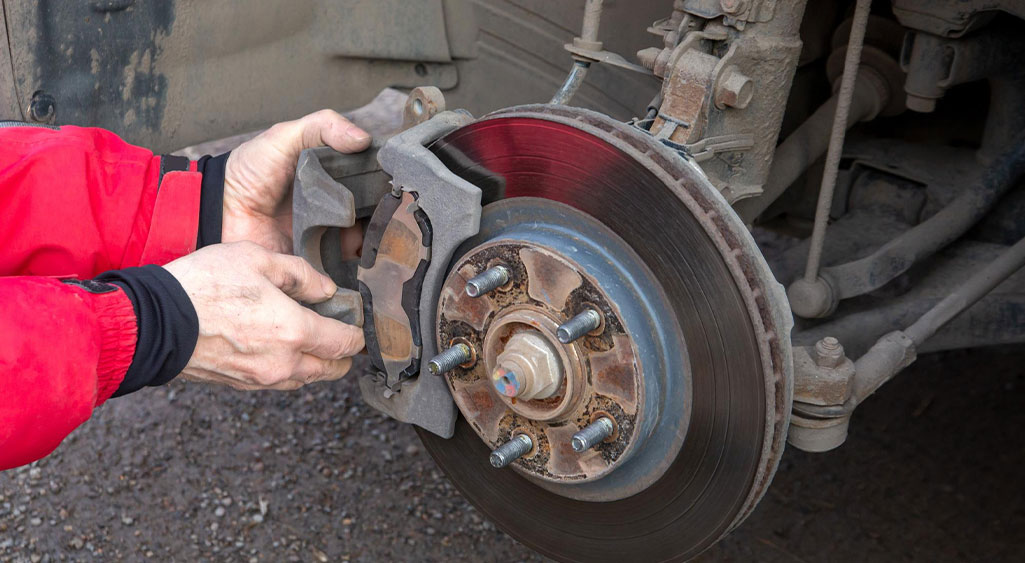
 Request FREE consultation - 1866-758-4529
Request FREE consultation - 1866-758-4529 
Semi-truck brake systems are complex systems with several separate stopping units. These include the service brakes, which apply pressure to the brake pedal through air or hydraulic pressure.
Semi-trucks have separate parking brakes, which must be used only during parking and are operated by heavy-duty springs. A third type of brake is the emergency braking system, which relies on a combination of parts from the service brake and parking brake systems. Heavy-duty trucks require tailored brake solutions to ensure efficient and safe operation. In addition, each braking system has its nuances.
Air brakes are self-explanatory. When attempting to stop, the braking system uses pressurized air to activate the braking mechanism, pushing pressurized air against the lining of the drum and disc when the driver steps on the brake pedal.
Since 1998, semi-trucks have also been equipped with anti-locking brake systems, which prevent the wheels from locking up and causing the driver to lose control of the vehicle.
Spring brakes are used as parking brakes—the reverse of air brakes. They are set when there is a lack of air pressure. The emergency brake system’s setup and use are a bit more complicated.
If the semi truck’s air brakes lose air pressure, the emergency brake system allows the spring brake to engage to stop the vehicle. In the event of total brake failure, a driver can manually apply the brakes. These sophisticated braking systems should offer a modicum of comfort to other drivers on the road.
Semi truck brakes are critical to a semi truck’s safety and performance. They are designed to provide reliable and efficient braking power to help prevent accidents and ensure safe operation on the road. Unlike passenger vehicles, semi trucks typically use air-powered brakes, which rely on compressed air to activate the brake system. This contrasts with hydraulic brakes, which use brake fluid to transmit pressure to the brake pads. Compressed air in truck brakes ensures a more robust and fail-safe braking system, essential for the heavy loads that semi trucks carry.
There are several types of brake systems used in semi trucks, each with its unique mechanism and advantages:
The brake system of a semi-truck consists of several key components, each playing a crucial role in ensuring effective braking:
However, it is no secret that big rigs take much longer to stop than the typical passenger car. A rule of thumb is that a tractor-trailer will take at least one-third longer to stop at highway speeds. High-performance brakes can significantly enhance the stopping capabilities of these vehicles, especially under heavy loads or towing conditions.
For this reason, it is always best to anticipate problems and drive safely when driving on the highway. We recommend that drivers who have a big truck closely behind them take steps to let the truck pass or move out ahead of it to avoid the potential for a sudden stop accident.
This all assumes that the semi-truck has broken the optimal and proper working conditions. Many of the truck accidents we investigate reveal that the trucking company, also known as a motor carrier, has not taken proper steps to ensure the trucks are safe for highway driving.
When a truck accident occurs because the brake system is not up to standards, the accident could have been prevented, or the seriousness could have been reduced substantially with proper operating brakes.
Maintaining brake pads and regularly checking for hydraulic fluid leaks are vital steps in ensuring the proper operation of a semi’s brakes. It is also important that the evidence is preserved and the scene evaluated as soon as possible after a big truck wreck. Trucking companies routinely try to put their trucks back in service as quickly as possible after a wreck to avoid an inspection by the injured person’s representatives.
Several common issues can occur with semi truck brakes, and understanding these can help in timely troubleshooting and maintenance:
Brakes- an integral part of semi trucks
How 18-Wheeler Air Brakes Work